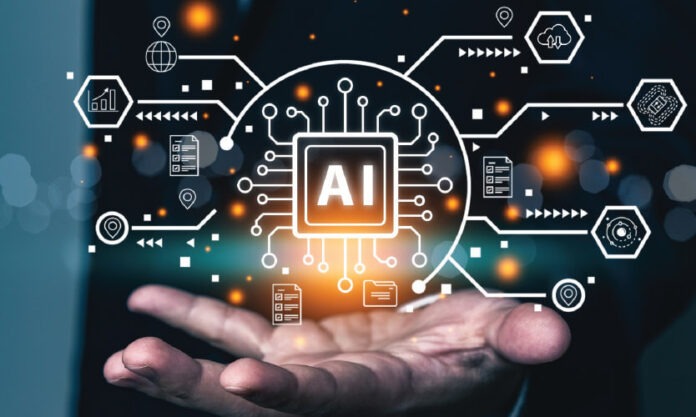Leveraging artificial intelligence (AI) could help global leaders fortify infrastructure to plan, respond, and recover quickly and decisively to more frequent and intense natural disasters, preventing approximately US$70 billion in infrastructure losses annually by 2050, according to a new report from the Deloitte Center for Sustainable Progress: AI for infrastructure resilience. The assessment uses empirical case studies, probabilistic risk modeling, and economic forecasting to demonstrate how AI-enabled infrastructure resilience can unlock economic, environmental, and societal benefits and underscores the need to invest in resilience to most effectively mitigate loss and damage.
“AI-enabled infrastructure resilience can transform how leaders protect their communities from the growing risk of extreme weather,” says Jennifer Steinmann, Deloitte Global Sustainability Business leader. “If deployed strategically, AI can help leaders identify risks sooner, optimize resources, prevent costly failures and disruption, and accelerate response and recovery times during natural disasters. Investing in both preventative and reactive AI-powered infrastructure solutions can help safeguard economic value and increase business resilience.”
The case for infrastructure resilience investment is strong
As natural disasters are expected to become more frequent and intense, infrastructure will be increasingly at risk. Its economic value can also increase its exposure to different hazards, further increasing the risks. It is important for leaders to enhance infrastructure resilience to protect existing networks and future projects, help minimize disruption to operations, and mitigate economic damage, given the potential future impacts, including:
- Unpredictable and significant financial impacts: Average annual losses from natural disasters are projected to rise to roughly US$460 billion to more than US$500 billion by 2050—with storms and floods being the costliest.
- Impacts on daily life: Disrupted or destroyed infrastructure can increasingly impede the function of essential services, like water, energy, and transportation. For example, power outages can affect communications or water supply interruptions can hinder energy production.
- Infrastructure at risk: Aging and degrading infrastructure is more vulnerable to natural disasters, but even new projects are not immune to these risks, which could cause economic losses as investments in infrastructure are projected to reach trillions of dollars in the coming decades.
Using AI at each stage of the infrastructure cycle
Adopting AI technologies, from infrastructure planning through operations, can offer preventative, detective, and responsive solutions to help address natural disasters, providing private and public sector leaders options to proactively mitigate these risks. And the benefits are significant—Deloitte Global’s report found that AI can help prevent damages of US$30 billion on average per year from storms alone globally by 2050. AI can provide leaders with options to proactively address risks across:
- Planning: Solutions such as digital twins, AI-enhanced urban planning, and predictive maintenance can enable leaders to design and manage more resilient infrastructure—such as efficient vegetation management to help maintain powerlines and curb wildfire risk—which can proactively prevent failures.
- Response: AI-powered detection and reaction systems, like early warning systems, can reduce risks from wildfires and floods. For example, early bushfire detection can help mitigate losses of between US$100 million and US$300 million annually in Australia, depending on detection and reaction times.
- Recovery: Following a natural disaster, AI can rapidly assess damages, allowing leaders to quickly restart critical economic activity and rebuild communities while lowering material waste. For example, Deloitte Consulting LLP’s OptoAI tool for post-disaster inspections can help reduce roof repair time by more than half while cutting material overages by 15%-30%.
How leaders can overcome challenges to adoption
While AI can be a powerful tool to enhance critical infrastructure resilience, leaders should work in tandem to remove roadblocks to adoption that span legacy infrastructure, regulatory gaps, and financial constraints. Global collaboration across sectors is critical to unlocking AI’s potential for infrastructure resilience:
- Policymakers can play a role in cohesive standard setting: Public sector leaders could look to global standards on AI adoption that are flexible and principles-based, that can promote secure, cross-sector, cross-border environmental data-sharing.
- Infrastructure leaders should embrace AI: Public and private sector owners and operators should invest in technology across the infrastructure lifecycle, upgrade legacy systems to support compatibility, and disclose data to improve AI models.
- Finance and insurance leaders can incentivize adoption: Insurance leaders should integrate AI into pricing models and claims, and more broadly, financial institutions can develop products tailored to AI-enabled infrastructure (like data centers) to help secure industry buy-in.
- Technology companies should continue innovating integrated, low-carbon solutions for resilience: AI and technology providers should work to aim their services, such as AI-enabled digital twins, toward infrastructure resilience and develop low-carbon, integrated computing solutions to help ensure a sustainable process for resilience.
“Coordinating across global stakeholders to develop AI solutions that complement other resilience options is important to boosting innovation and subsequently creating a more resilient future,” says Costi Perricos, Deloitte Global GenAI Business leader. “With broader adoption and improved AI capabilities, projected annual savings in direct disaster costs by 2050 could reach as much as US$115 billion, potentially eliminating nearly one-third of disaster-related losses. This research demonstrates the clear economic, environmental, and societal value AI can provide—and leaders should take action to help ensure minimal disruption.”





